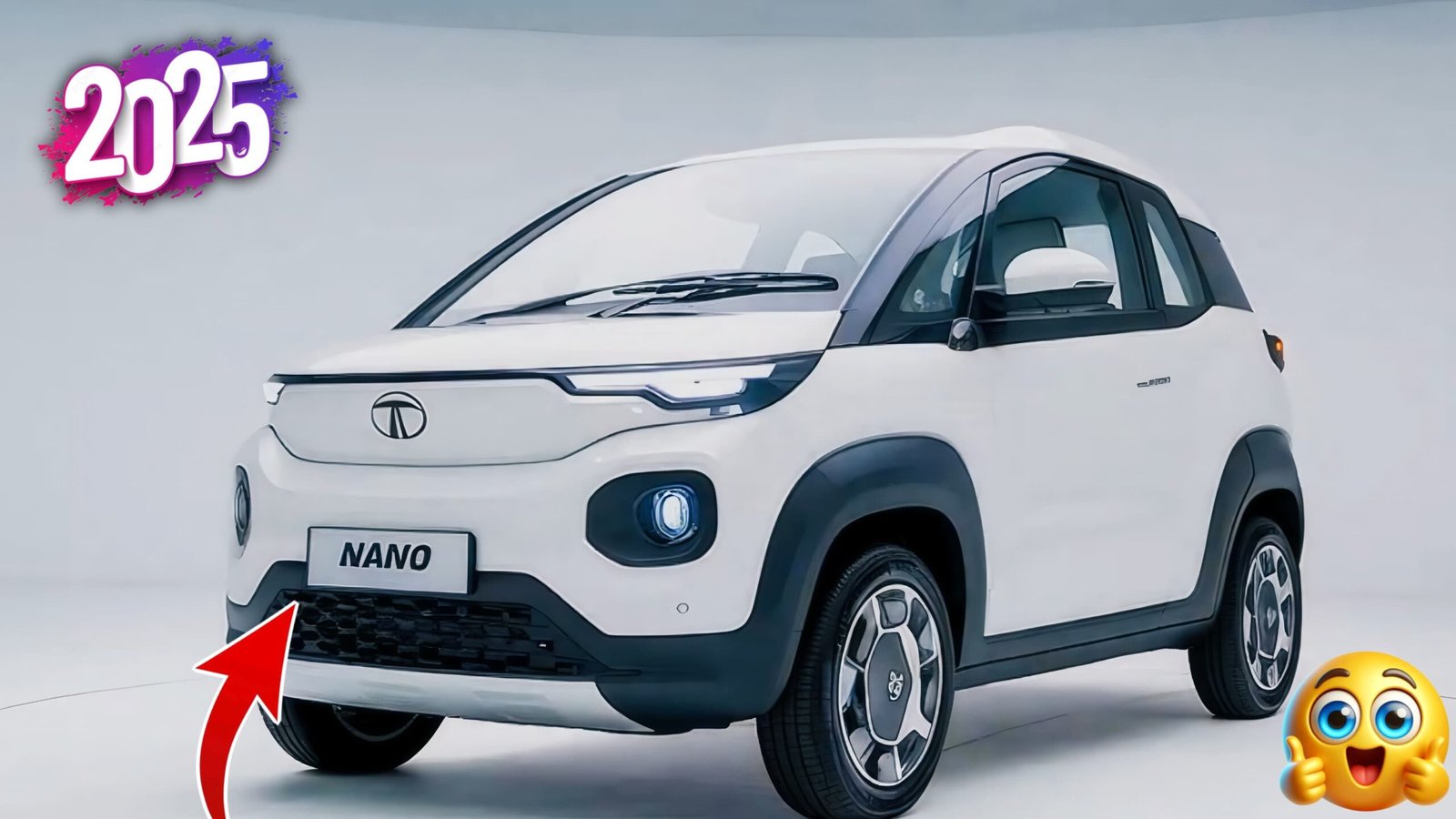The Tata Nano returns in 2025 with a fresh electric or modern petrol evolution, bringing the same promise of affordable urban mobility but with contemporary design, upgraded safety, and increased range. Aiming at first-time car buyers and city commuters, the new Nano maintains its compact footprint while fitting essentials such as touchscreen infotainment, airbags, power steering, and improved efficiency. With an estimated price between ₹3.5 lakh and ₹4.5–9 lakh depending on variant and powertrain, this new Nano seeks to blend nostalgia with practicality—offering modern convenience without stretching the wallet.
Heritage Reimagined
Legacy of Accessibility
When the original Nano launched in 2008, it was hailed as the world’s most affordable car. Its compact size and basic features made it beloved among low‑cost vehicle seekers. Now, Tata Motors aims to bring back that ethos—but with modern comfort and compliance.
Designed for Modern India
The 2025 Nano retains its small footprint—ideal for tight urban streets and easy parking—but has been re-styled with sharper bumpers, sleeker headlamps, and a modern front fascia. The revised cabin now feels more refined and user-friendly.
Key Specifications
Expected Powertrains
At present, two versions are expected: a fuel‑efficient BS6 petrol (624 cc) and a future EV variant. The petrol model is estimated to produce around 38 PS and 51 Nm torque, returning around 24‑25 kmpl in city driving conditions. Electric prototypes suggest a practical range of around 200 km on a single charge, with fast‑charging capability planned.
Safety and Cabin Upgrades
Tata is likely to equip the Nano with essential safety: dual front airbags, ABS with EBD, rear parking sensors or camera, and ISOFIX mounts. Interior updates include power steering, power windows all around, digital instrument display, and simple infotainment touchscreen.
Variants and Pricing
Price Range
Reports suggest the entry-level petrol Nano could start at approximately ₹3.5 lakh (on‑road), while higher petrol trims with AMT could be under ₹4.5 lakh. If launched, the EV version is expected to be priced between ₹6–9 lakh—making it one of the most affordable four-wheel EVs in India.
Trim Levels
Likely trims include XE (basic), XM (mid), and XZ (with AMT or added features). EV models may come separately, offering features such as a better infotainment system, faster chargers, and slightly more premium fittings.
Performance and Range
Urban Efficiency
The petrol Nano’s lightweight body and small engine aim for city efficiency around 24‑25 kmpl. Off‑beat roads and highway travel remain feasible for short ranges due to modest fuel tank size.
Electric Range Expectations
The Nano EV is expected to offer about 200 km per full charge. With modern lithium‑ion batteries and fast‑charging, it can cater to daily city commutes comfortably, possibly topping 300 km in optimal driving conditions.
Comfort and Ergonomics
Ergonomic Cabin Layout
The new Nano’s cabin prioritises functionality—with sturdy steering, upright seating, and easy access controls. Although compact, the interior is optimized for humour‑free operation and practicality.
Compact Dimensions with Space Utility
Despite its tiny footprint, the Nano accommodates four adults comfortably, with minimalistic but clever storage touches. Boot space is limited but suitable for daily groceries or light luggage.
Connectivity and Infotainment
Digital Dashboard and Touch Display
Across most trims, a semi‑digital instrument cluster shows speed, fuel level, trip meter, and battery status (in EV). A basic infotainment touchscreen offers Bluetooth or USB support, likely with smartphone integration in higher variants.
Features That Matter
Power steering, power windows in front seats, reverse parking alert, and a mobile holder slot fulfil essentials. For EV trims, app-based vehicle tracking, charging status, and remote features may be included.
Safety and Build Quality
Structural Improvements
The 2025 Nano appears to use improved build materials and reinforced body structure for better crash protection. Safety upgrades significantly raise the safety quotient over its predecessor.
Essential Safety Kit
Standard offerings like dual airbags, ABS-EBD, and reverse sensors aim to meet urban safety needs. Higher variants may include rear camera, stability control, and better seat ergonomics.
Market Positioning and Rivals
Ideal Buyer Profile
The new Nano targets urban families, young professionals, and entry-level car buyers who need an affordable, reliable, and low-running vehicle. EV versions appeal to eco-conscious users or buyers in metro areas with charging setups.
Competitive Landscape
Petrol Nano competes with entry-level hatchbacks like Alto K10, Celerio, and Tiago. The possible Nano EV may rival MG Comet EV and micro EVs, offering unmatched value at lower price bands.
Strengths and Limitations
Advantages
- Extremely compact and easy to maneuver in dense traffic
- Low entry price point
- Good fuel efficiency or electric range potential
- Improved safety and modern features
- Ideal for first-time buyers or urban commuters
Considerations
- Limited performance on highways
- Very small cabin and boot space
- Features are basic compared to mid-level hatchbacks
- EV variant availability and charging infrastructure remain key concerns
Final Verdict
The Tata Nano 2025 represents a bold revisit to the micro‑car concept—this time with modern sensibilities, improved safety, and options for both petrol and EV powertrains. It retains its stripped‑down charm while offering enough upgrades to appeal to present‑day buyers. With aggressive pricing, urban practicality, and Tata’s service network backing it, the new Nano could once again democratise car ownership across India.
